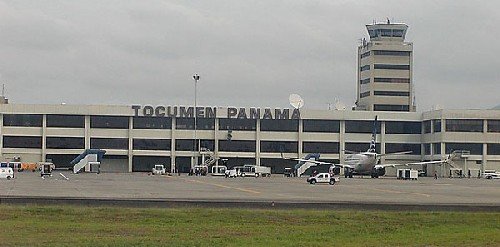(Reuters) – Panama has in recent years invested billions of dollars to establish itself as a top commercial, logistical and air transport hub in the Americas.

That has also made it prone to opening its doors to diseases like COVID-19, caused by the novel coronavirus.
With 90 air connections to 34 countries in the Americas and Europe through its main airport, and the Panama Canal handling 5% of world maritime trade, Panama is today one of Latin America’s busiest transit points.
The connectivity has also led to a particularly high concentration of coronavirus infections.
“This obviously exposed us to more risk than other countries that don’t have the same amount of multimodal movement,” said Israel Cedeno, deputy national director of planning at Panama’s health ministry.
Panama has recorded almost the same number of coronavirus cases as Mexico, which has over 30 times its population – despite restricting traffic through the canal, closing airports to international flights and declaring a national quarantine.
With 1,075 cases among its 4.1 million inhabitants, Panama has the highest coronavirus infection rate per capita in Latin America, according to official data. Mexico has 1,094 cases.
Since authorities imposed tighter containment measures, streets are mostly empty, many shops are closed and tourism has ground to a halt in the international business hub.
Businesses have reinforced doors and windows for fear of looting. Many residents liken the situation to Panama’s last curfew in December 1989, when the U.S. government invaded the isthmus nation to oust dictator Manuel Noriega.
Panama’s Tocumen International Airport received 16 million travelers last year on 5,900 weekly flights. Most did not stay in Panama but used the country as a transit point.
Mexico City’s main international airport, by contrast, registered 50 million passengers in 2019 – but only 17 million of them were international.
At the same time, 13,785 ships from 160 countries went through the Panama Canal in 2019, a record for the waterway. Panama’s ports received 7.3 million 20-foot containers (TEUs), more than the 7.1 million TEUs logged by Mexican ports.
The high concentration of cases may be a result of more testing and advance preparation for the outbreak, experts say.
As of Monday, Panamanian authorities had carried out 6,582 tests, while in Mexico 6,729 were conducted.
“There are countries with few cases because they’re (unlike Panama) not looking for them,” said Xavier Saez-Llorens, a disease expert and adviser on the committee tackling the outbreak in Panama. “Seek and ye shall find.”